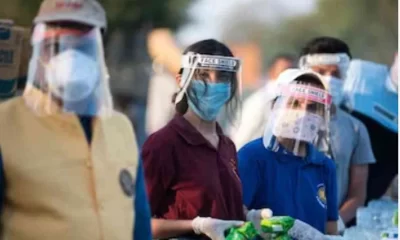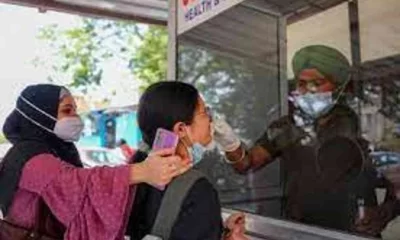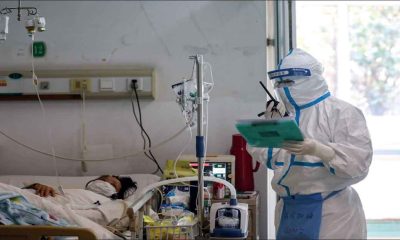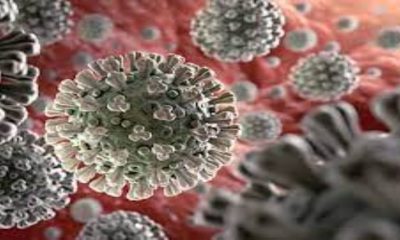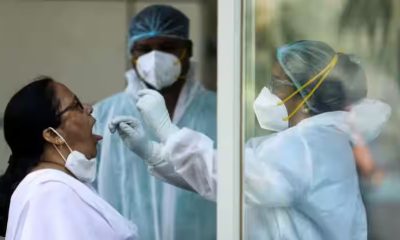Health
Covid-19 Scare: Worried because of new variant? Know where and how you are most likely to get infected
We all want to meet our friends or have them at our dinner. We all want to be in our routine back. We all want to go to gyms, dance in nightclubs without any fear of catching Covid-19. Here we are providing you with information that will help you to know how and when you can get infected with it.

We have been two years into the pandemic situation. Most of us have been infected with Covid-19. Now, its new variant Omicron is increasing day by day. Also, one more variant Deltacron has been found. Once, again the hospitalization rates are increasing rapidly in many countries.
In this situation, we yearn to get back to normal. We all want to meet our friends or have them at our dinner. We all want to be in our routine back. We all want to go to gyms, dance in nightclubs without any fear of catching Covid-19.
But are we actually aware of this Covid-19? Do we know how likely we are about to catch Covid-19?
Let’s find out some simple answers to such questions
What is Covid-19 and how does it spread?
Well, Sars-Cov-2 is a virus that causes Covid-19. It spreads mainly by airborne transmission. There are certain air particles in the air. These air particles spread randomly. Then, these air particles came into human contact through the nose and enter the human body. Then, it affects our respiratory system.
How these airbone particles behave and you get infected with Covid-19?
Air is a fluid that is made of millions of invisible particles. It spreads randomly and rapidly moving molecules. These airborne particles disperse over time indoors. Indoors such as in a room or on a bus. An infected person may exhale those particles containing the virus. Now, if you are closer to that particular person, there are likely high chances to get infected. It is because as you inhale those infected particles also enter your body.
When these viral particles are emitted?
The viral particles containing infection are emitted every time an when an infected person breathes. It is deeper when their breathing is deep such as exercising and vocalisation such as speaking or singing. However, if an infected person wears a well-fitting mask, then it reduces its transmission as the mask blocks the release of infection.
How more are you likely to get infected?
These are the situations that suggest that you are more likely to get infected with Covid-19 infections.
- When you gather together with lots of people in an enclosed space and that too with poor air-qaulity. This means an under-ventilated gym, school classroom or nightclub.
- When stay with people for longer time.
- When you so something strenuous or rowdy such as exercising, singing or shouting.
Health
India registers 313 new Covid cases, active cases reach 2,041, 3 deaths recorded in last 24 hours
The currently available data suggests that the JN.1 variant is neither leading to an exponential rise in the new cases nor a rise in the hospitalization and mortality.
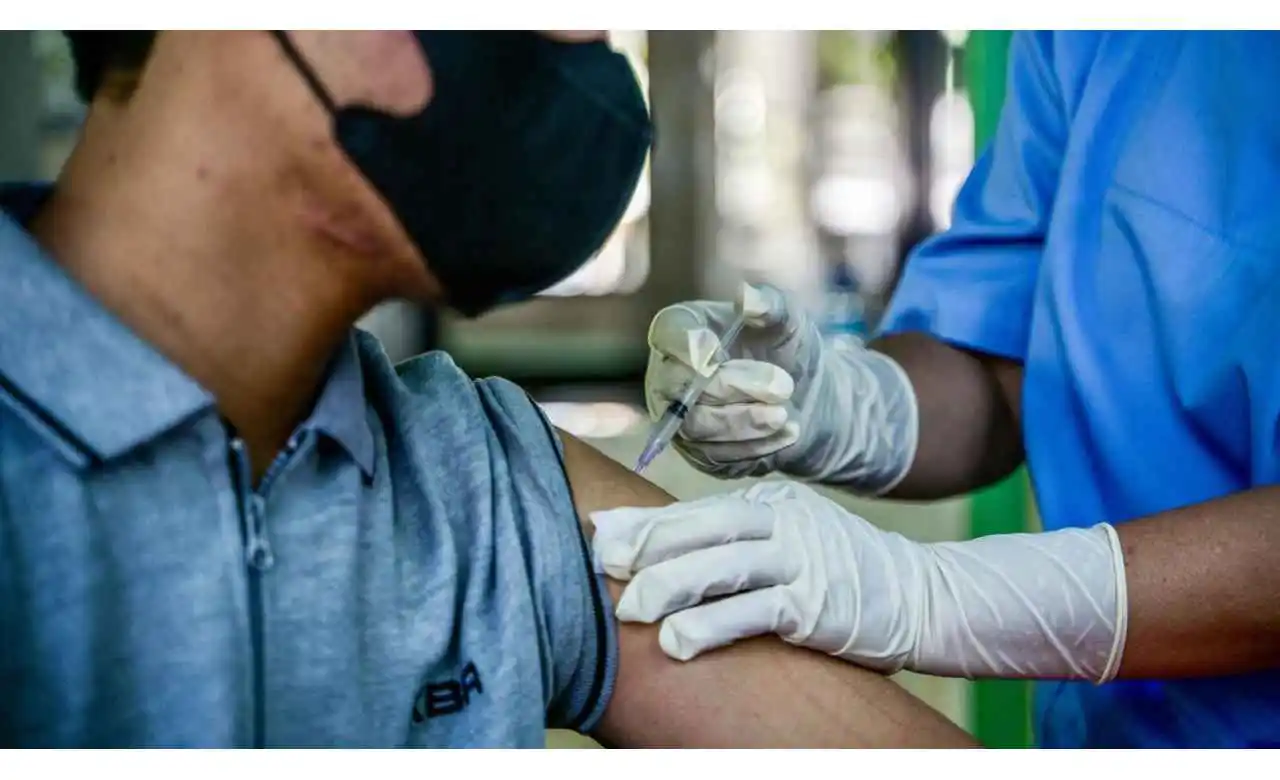
India saw a single-day rise of 313 new Covid cases, while the active caseload has declined to 2,041, the health ministry said on Saturday. Three deaths: two from Karnataka and one from Maharashtra were reported in the last 24 hours.
According to the ministry website, the number of active cases in the country stood at 2,331 on Friday. The number of cases of Covid had dropped to double digits till December 5, but it began to start increasing after the emergence of a new variant and cold weather conditions.
According to reports after December 5, the highest single day rise of 841new cases was reported on December 31, 2023, which is 0.2% of the peak cases reported in May 2021. Of the total active cases, a large majority of these (around 92%) are recovering under home isolation.
The currently available data suggests that the JN.1 variant is neither leading to an exponential rise in the new cases nor a rise in the hospitalization and mortality. India has witnessed three waves of Covid in the past with its peak incidence of daily new cases and deaths being reported during the delta wave in April June 2021.
At its peak, 414,188 new cases and 3915 deaths were reported on May 7, 2021. Since the pandemic started in early 2020, there have have been 4.5 crore people who have got infected and this has resulted in the death of 5.3 lakh persons in a total time span of four years.
According to the ministry data, the total number of persons who have recuperated from the disease are 4.4 crore with total recovery rate recorded is 98.81%. A total number of 220.67 crore doses of Covid vaccines have been administered in India so far.
Health
India registers 605 new COVID-19 cases and 4 deaths in last 24 hours
The number of people who have recovered from the disease has gone up to 4,44,81,341, an increase of 648 since Sunday morning. In Kerala a 70 year-old male with chronic obstructive pulmonary disease (COPD) and 81year-old male with T2DM and HTN, and in Karnataka, a 48 year old male with CA and TB died, while one person in Tripura succumbed to COVID.

India recorded 605 fresh COVID-19 cases and four deaths in the last 24 hours. The active cases have increased to 4002, while India’s overall COVID case tally stands at over 4.5 crore (4,50,18,792). The death toll was recorded at 5,33,396 with four new deaths – two from Kerala and one each in Karnataka and Tripura – reported in the last 24 hours, the data updated at 8am stated.
The number of people who have recovered from the disease has gone up to 4,44,81,341, an increase of 648 since Sunday morning. In Kerala a 70 year-old male with chronic obstructive pulmonary disease (COPD) and 81year-old male with T2DM and HTN, and in Karnataka, a 48 year old male with CA and TB died, while one person in Tripura succumbed to COVID.
The Indian Council of Medical Research (ICMR) reported that 11,838 doses of the vaccine had been administered in the country till January 7. The data is a compilation of the Integrated Disease Surveillance Programme (National Centre for Disease Control), media bulletins and websites of various states at 8am on January 4.
As the winter season sets in, health experts are highlighting a sudden surge in viral infections, influenza, and COVID-19 cases. Dr Nikhil Modi, a senior pulmonologist at Indraprastha Apollo Hospital, pointed out that the decrease in temperature leads to increase in moisture in the air, low wind speed and also causes an increase in pollution levels. This contributes highly to various infections.
Due to the decrease in temperature the fog combines with the pollution in the air which further leads to the formation of smog. This condition of the atmosphere can cause different types of infections and difficulty in breathing. Both the state and the central government are keeping a close watch on the new Omicron Subvariant JN.1. J.N.1 is a Variant of Interest (VOI) which is under intense scientific scrutiny.
Health
India records 774 new Covid-19 cases, 2 deaths in 24 hours
The number of daily cases was in double digits till December 5 but it started to rise again amid cold weather conditions and after the emergence of new Covid-19 variant, JN.1.
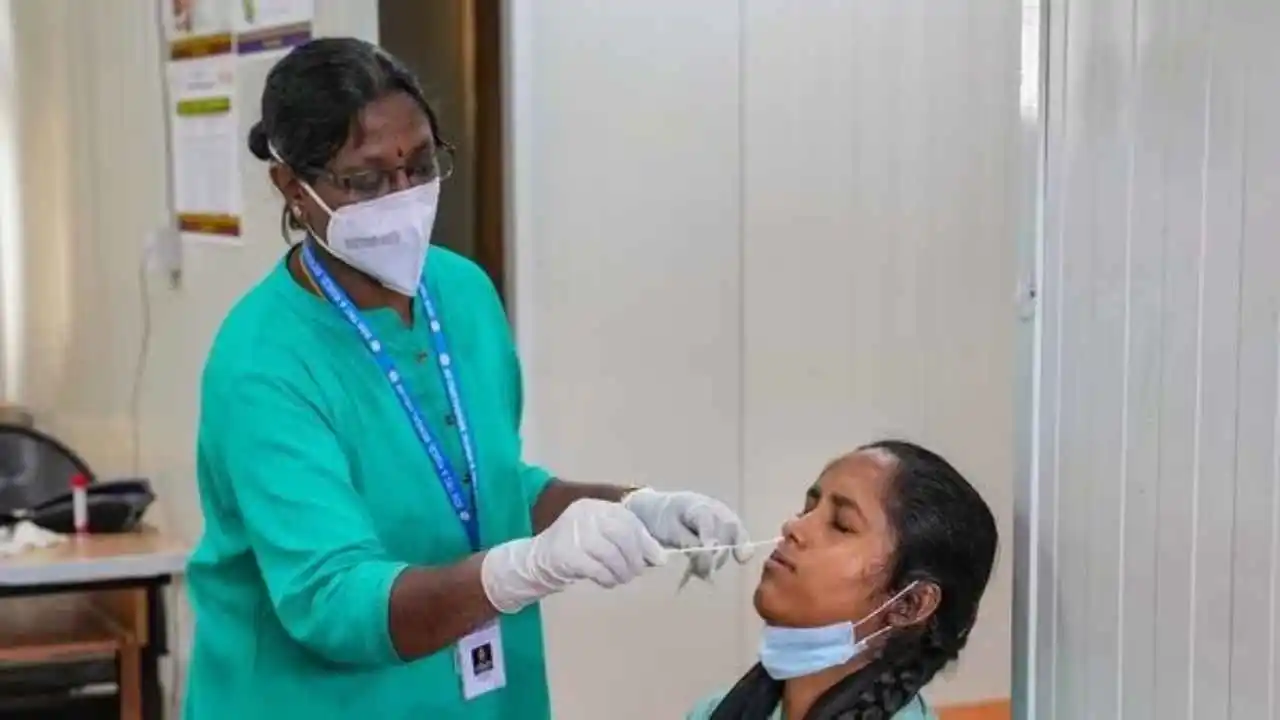
India on Saturday had a single-day rise of 774 Covid cases while the number of active cases stood at 4,187, the Union health ministry said. As many as two deaths – one each from Tamil Nadu and Gujarat were reported in a span of 24 hours. Of the 4,187 active cases, the majority (over 92%) are recovering under home isolation.
The number of daily cases was in double digits till December 5 but it started to rise again amid cold weather conditions and after the emergence of new Covid-19 variant, JN.1. The central government has asked the state government and union territories to maintain a constant vigil amid an upward trend in the number of Covid-cases and the detection of the JN.1 sub variant in the country.
According to reports after December 5, the highest single-day rise of 841 cases was reported on December 31, 2023, which was 0.2% of the peak cases reported in May 2021. A health official said that the JN.1 variant is neither leading to an exponential rise in new cases nor a surge in hospitalisation and mortality in the country.
The Karnataka government has made the Covid test mandatory for those with Influenza like illness (ILI) or Severe Acute Respiratory Illness (SARI). Karnataka Health Minister Dinesh Gundu Rao said more than 7000 tests are being done every day and the COVID positivity rate is 3.82%. The positivity rate in the state has not come down yet.
He said those with symptoms are being monitored and tested. Those who are in isolation at home have been told to take extra care. He added it is expected that the trend of decreasing Covid cases may start next week in Karnataka. India has witnessed three waves of Covid-19 in the past with the peak incidence of daily cases and deaths being reported during the Delta wave during April-June 2021. At its peak 4,14,188 cases and 3915 deaths were reported on May 7, 2021.
-

 Cricket news19 hours ago
Cricket news19 hours agoIPL 2024: Jos Buttler’s unbeaten century helps Rajasthan Royals chase down 224 against Kolkata Knight Riders
-

 Latest world news16 hours ago
Latest world news16 hours agoDubai sky turns green during storm in UAE, video goes viral
-

 Entertainment19 hours ago
Entertainment19 hours agoAmitabh Bachchan to receive Lata Deenanath Mangeshkar award, AR Rahman, Randeep Hooda to be honored
-

 Cricket news16 hours ago
Cricket news16 hours agoKKR captain Shreyas Iyer fined Rs 12 lakh for slow over rate in match against RR
-

 2024 Lok Sabha Elections18 hours ago
2024 Lok Sabha Elections18 hours agoMK Stalin says if Prime Minister Narendra Modi comes to power again, the country would go back by 200 years
-

 2024 Lok Sabha Elections15 hours ago
2024 Lok Sabha Elections15 hours agoMamata Banerjee accuses BJP of plotting riots on Ram Navami
-

 India News20 hours ago
India News20 hours agoPM Modi greets nation on Ram Navami, says Ayodhya is in incomparable bliss
-

 India News17 hours ago
India News17 hours agoPM Modi chants Jai Shri Ram in Assam rally, shares visuals of Ram Lalla’s Surya Tilak, says emotional moment for him



